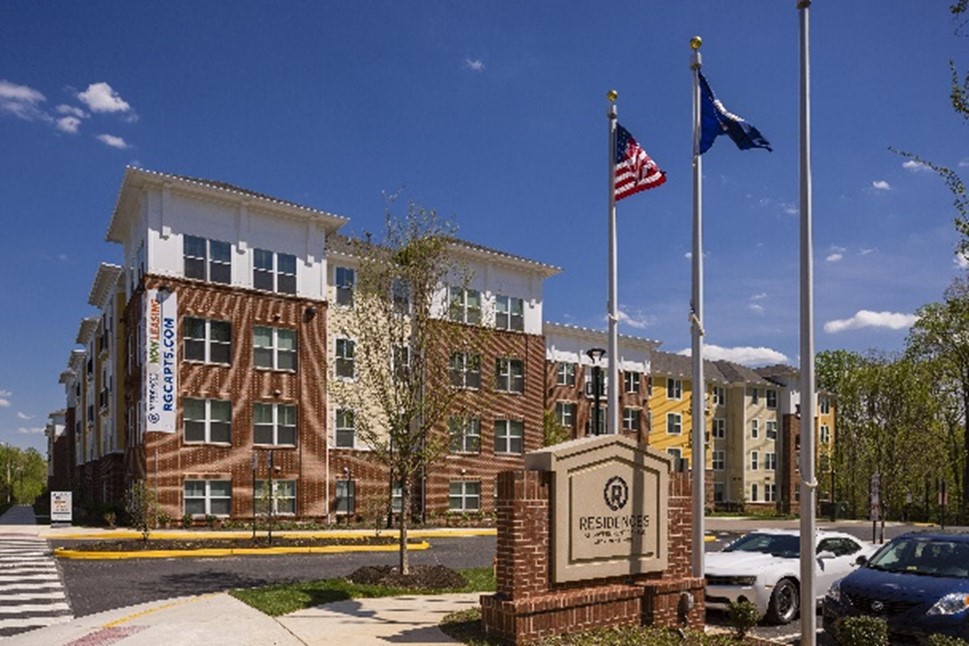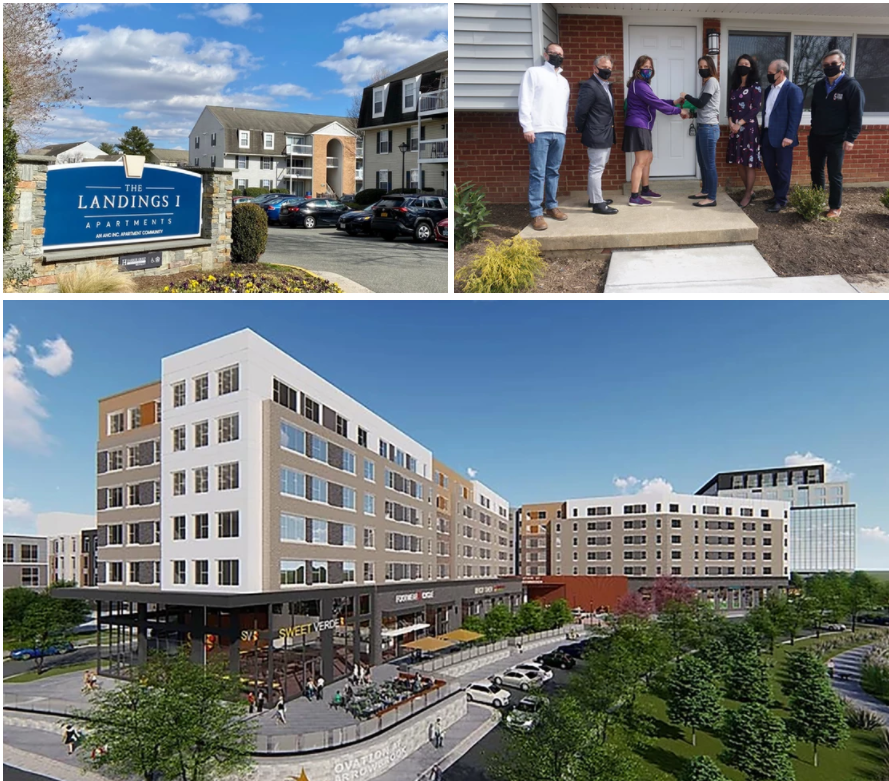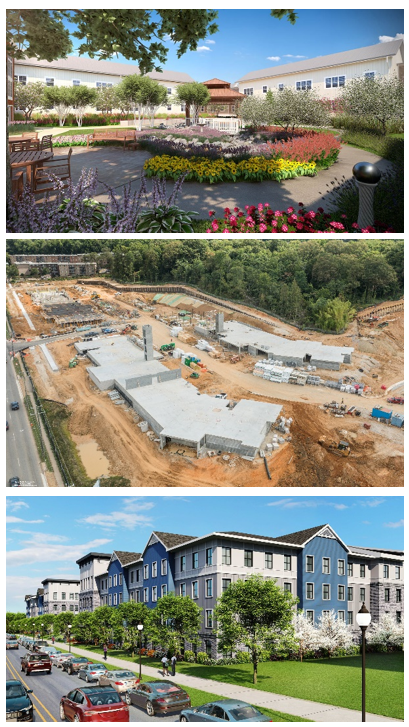In the article entitled “Building Immunity: How affordable housing funding was protected from the effects of Covid” the Washington Business Journal shared a regional view of what the area’s jurisdictions are doing to keep progress moving towards solving the region’s affordable housing challenges.
- See the full article here (subscription may be required)
Among the ongoing housing struggles and economic impacts of COVID-19, the article highlights the work that both affordable housing developers and local jurisdictions are undertaking to maintain progress in affordable housing development. In so doing, article recognized the significant work being done in Fairfax County to bring more affordably priced homes to neighborhoods across the county. One secret to that success – a multi-faceted approach to investment in housing development.
Beginning with the award-winning Residences at Government Center community on the campus of the Fairfax County Government Center Complex, the Board of Supervisors and the Fairfax County Redevelopment and Housing Authority (FCRHA) have recognized the significance of combining both funding and land investments to promote sustained advancement in the preservation and new development of affordable housing opportunities.

“There are many resources we can utilize to make housing a more affordable and attractive venture for our partners – who have been crucial in enhancing this county’s portfolio of affordable homes,” said Fairfax County Board of Supervisors Chairman Jeffrey McKay. “We continue to see time and again that this multi-tiered approach yields amazing advancements for Fairfax County families and communities.”
Dollars and Sense
The FCRHA has long been responsible for the wise investment of local funds – as well as financial allocations from the state and federal governments – to help finance the preservation and new development of affordable housing. Making loans, awarding grant funding, and issuing revenue bonds have all combined to help affordable housing developers find the critical capital necessary to be able to acquire, construct, or rehabilitate affordable housing projects to support the county’s low- to moderate-income households.

The FCRHA has invested in numerous affordable housing developments including: The Landings in Fort Belvoir, supportive housing for veterans in Alexandria, and the development of the Ovation at Arrowbrook in Herndon.
After having to delay the planned restoration of the full value of a penny on the tax rate for affordable housing due to COVID-19, the Fairfax County Board of Supervisors has doubled down on its financial support in fiscal year 2022. This year, the county announced more than $18 million in funding availability for affordable housing, with the potential for much more. Confirmed funding is coming from the Affordable Housing Development and Investment Fund ($9.9 million) and the Tysons Housing Trust Fund ($8.7 million). The Fairfax County Board of Supervisors has also preliminarily identified $15 million in federal American Rescue Plan Act funding and an additional $5 million in local dollars as part of the budget “carryover” process.
While the right amount of money can certainly bring a deal to its close, there’s another competing resource that is often overlooked in terms of its value to get a project from concept to the ribbon cutting.
This Land is Our Land
 While financial investments typically grab top billing in the news, it’s often the cost of the land that is the main determinant in terms of whether a project can get done or not. It’s tough to stand strong in a bidding war when affordable housing developers are competing for the same parcels against their market-rate and luxury home developer counterparts. By acquiring land and directing its use for the development of affordable housing, the FCRHA breaks down a significant barrier to the development of affordable housing.
While financial investments typically grab top billing in the news, it’s often the cost of the land that is the main determinant in terms of whether a project can get done or not. It’s tough to stand strong in a bidding war when affordable housing developers are competing for the same parcels against their market-rate and luxury home developer counterparts. By acquiring land and directing its use for the development of affordable housing, the FCRHA breaks down a significant barrier to the development of affordable housing.
In recent years, Fairfax County has become extremely adept with respect to its use of the Public-Private Education Facilities and Infrastructure Act of 2002 (PPEA) which provides a framework for public-private development projects. Through these PPEA agreements, the FCRHA allows affordable housing developers to build, own and operate housing communities pursuant to a long-term leasing agreement which keeps homes affordable.
From the award-winning Fallstead senior living community (McLean) to the Residences at North Hill (Alexandria) and One University (Fairfax), Fairfax County’s affordable housing portfolio is beginning to see more and more projects developed or in development on public lands representing well over $100 million in real estate investment for affordable housing.
“When it comes to ‘investment’ the conversation usually stops with the dollars involved,” said FCRHA Chairman Melissa McKenna. “However, when you have a jurisdiction willing to commit the land, it goes a long way towards reducing a developer’s overall project costs in order to make the development deal possible.”
See Also:
- Fairfax County Designates Government Center Parking Lots for Potential Affordable Housing
- Fairfax County Designates Franconia Government Center Site for Potential Affordable Housing
Working Both Sides of the Equation
Fairfax County has committed to the goal of producing a minimum of 5,000 new units of housing by the year 2034. Two years into this 15-year goal, the FCRHA has a total of 1,867 affordable units completed, under construction, or in the development pipeline with more on the way.
Affordable housing is a critical component for individual, family, and communitywide success. While the economic effects of COVID-19 created moments of pause and uncertainty, the pandemic also brought clarity to an issue that can no longer afford to be overlooked in terms of priority. Our residents cannot find health, stability, or security at home if they can’t afford one.
As the Washington Business Journal article indicated, public housing authorities and local governments across the region are all finding new and creative ways to continue to advance the development of affordable homes throughout the DMV. What Fairfax County’s success shows, is that it takes both dollars AND dirt to promote sustainable growth in affordable housing development.
“The true key to the FCRHA’s success is balance,” Chairman McKenna added. “You can’t rest on your laurels with just one approach that seems to work. When you want to make the kind of progress we’re aiming for when it comes to affordable housing, you have to work both sides of the equation.”

